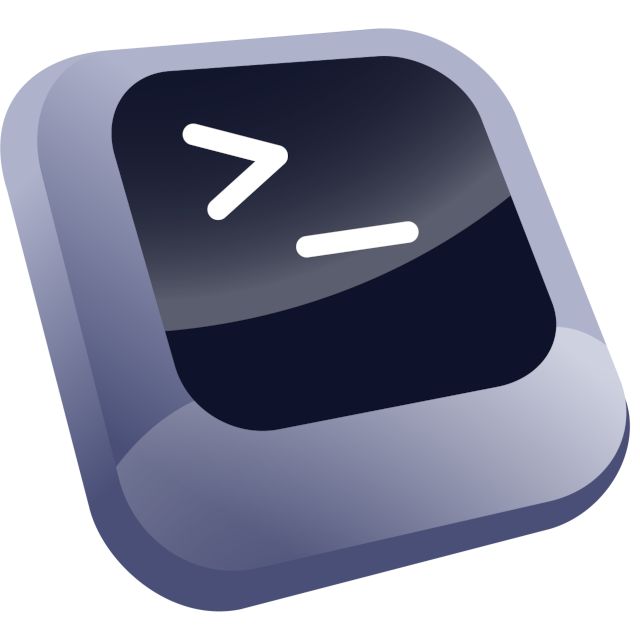
Overview

Product video
This is a repackaged open source software wherein additional charges apply for extended support with a 24 hour response time.
Ansible on CentOS 10 offers a powerful automation platform designed for managing systems, deploying applications, and orchestrating complex workflows. Built on the robust CentOS 10 operating system, this AMI comes pre-installed with Ansible, enabling seamless integration and configuration management.
CentOS 10 Key Features:
- Pre-configured Ansible: Instant access to the latest version of Ansible, eliminating the need for manual installation and configuration.
- CentOS 10 Stability: Leverage the rock-solid performance and security features of CentOS 10, ensuring a reliable environment for automation tasks.
- Easy Scalability: Effortlessly scale your infrastructure, enabling rapid provisioning and deployment of resources across multiple environments.
CentOS 10 Benefits:
- Enhanced Productivity: Automate repetitive tasks, allowing your teams to focus on higher-value work and accelerate project timelines.
- Improved Consistency: Achieve consistent results across your infrastructure by utilizing Ansible's declarative configuration language.
- Integration Capabilities: Supports integration with a wide range of cloud services, hybrid environments, and platforms, fostering a flexible architecture.
CentOS 10 Use Cases:
- Infrastructure Management: Automate the provisioning and management of servers and services in EC2 or hybrid environments.
- Continuous Deployment: Streamline your CI/CD pipelines by automating deployments and facilitating seamless updates.
- Configuration Management: Maintain system configurations and ensure compliance across multiple instances effortlessly.
Whether you are managing a small development environment or a large production setup, Ansible on CentOS 10 is an ideal choice for optimizing and automating your IT operations.
Try our most popular AMIs on AWS EC2
- Ubuntu 24.04 AMI on AWS EC2
- Ubuntu 22.04 AMI on AWS EC2
- Ubuntu 20.04 AMI on AWS EC2
- Ubuntu 18.04 AMI on AWS EC2
- CentOS 10 AMI on AWS EC2
- CentOS 9 AMI on AWS EC2
- CentOS 8 AMI on AWS EC2
- Debian 12 AMI on AWS EC2
- Debian 11 AMI on AWS EC2
- Debian 10 AMI on AWS EC2
- Debian 9 AMI on AWS EC2
- Red Hat Enterprise Linux 9 (RHEL 9) AMI on AWS EC2
- Red Hat Enterprise Linux 8 (RHEL 8) AMI on AWS EC2
- Red Hat Enterprise Linux 7 (RHEL 7) AMI on AWS EC2
- Oracle Linux 9 AMI on AWS EC2
- Oracle Linux 8 AMI on AWS EC2
- Oracle Linux 7 AMI on AWS EC2
- Amazon Linux 2023 AMI on AWS EC2
- Windows 2022 Server AMI on AWS EC2
- Windows 2019 Server AMI on AWS EC2
- Docker on Ubuntu 20 AMI on AWS EC2
- Docker on CentOS 10 AMI on AWS EC2
Highlights
- Experience seamless automation with Ansible on CentOS 10, designed for both novice and expert users. Easily manage your infrastructure with a simple, agentless architecture that leverages SSH for secure orchestration. The powerful playbook capabilities allow you to define processes consistently and repeatably, ensuring optimal resource deployment and configuration management across various environments while minimizing manual intervention and human errors.
- Enhance operational efficiency by harnessing Ansible's extensive ecosystem and support for a multitude of modules, which enables integration with cloud providers, production databases, and other third-party applications. The well-documented features and community-driven enhancements make it a versatile tool that can adapt to unique business needs, providing an effective solution for continuous integration and continuous delivery (CI/CD) practices.
- Ideal for DevOps teams and system administrators alike, Ansible on CentOS 10 streamlines workflows by allowing teams to focus on strategic projects rather than routine maintenance. With its straightforward setup and intuitive language, teams can deploy applications in minutes or scale infrastructure across multiple regions without compromising on performance or security, ensuring a robust and future-proof cloud infrastructure.
Details
Introducing multi-product solutions
You can now purchase comprehensive solutions tailored to use cases and industries.

Features and programs
Buyer guide

Financing for AWS Marketplace purchases

Pricing
- ...
Dimension | Cost/hour |
|---|---|
c5n.2xlarge Recommended | $0.56 |
t2.micro | $0.21 |
t3.micro | $0.07 |
m7i-flex.2xlarge | $0.56 |
r7i.12xlarge | $3.36 |
m4.2xlarge | $0.56 |
m2.4xlarge | $1.12 |
r6i.24xlarge | $4.48 |
r5.xlarge | $0.28 |
r6i.4xlarge | $1.12 |
Vendor refund policy
The instance can be terminated at anytime to stop incurring charges
How can we make this page better?

Legal
Vendor terms and conditions
Content disclaimer
Delivery details
64-bit (x86) Amazon Machine Image (AMI)
Amazon Machine Image (AMI)
An AMI is a virtual image that provides the information required to launch an instance. Amazon EC2 (Elastic Compute Cloud) instances are virtual servers on which you can run your applications and workloads, offering varying combinations of CPU, memory, storage, and networking resources. You can launch as many instances from as many different AMIs as you need.
Version release notes
System Update
Additional details
Usage instructions
Once the instance is running, connect to it using a Secure Shell (SSH) client with the configured SSH key. The default username is 'ec2-user'.
OS commands via SSH: SSH as user 'ec2-user' to the running instance and use sudo to run commands requiring root access.
Resources
Vendor resources
Support
Vendor support
Email support for this AMI is available through the following: https://supportedimages.com/support/ OR support@supportedimages.com
AWS infrastructure support
AWS Support is a one-on-one, fast-response support channel that is staffed 24x7x365 with experienced and technical support engineers. The service helps customers of all sizes and technical abilities to successfully utilize the products and features provided by Amazon Web Services.


Standard contract
Customer reviews
Have managed thousands of servers with streamlined configuration processes
What is our primary use case?
I have created resources for the monitoring tech stack with Red Hat Ansible Automation Platform , especially for setting up one master data center and another data center for different applications routed to the monitoring setup, where I have created Splunk servers and installed all Splunk agents and prerequisites with the help of Ansible , including an Ansible playbook.
I have used the agentless architecture in Red Hat Ansible Automation Platform, as SSH is agentless.
I use a centralized automation controller in Red Hat Ansible Automation Platform, called the master setup, where we execute our commands with installed prerequisites, inventory information, and the Ansible playbook, managing other node servers with a passwordless setup.
When creating any server with Red Hat Ansible Automation Platform, it is a significant advantage because if we set up a Splunk agent in one case, it is necessary for each server. By writing the playbook, the agent is installed immediately during server provisioning, providing us with an edge.
What is most valuable?
Red Hat Ansible Automation Platform is very helpful due to passwordless integration and the ability to interact with multiple servers at once, which is especially advantageous when dealing with thousands of servers.
The integration aspect of Red Hat Ansible Automation Platform has optimized my IT ecosystem significantly by consolidating multiple tools, such as a CI/CD pipeline with Jenkins , where we validate everything, including testing and SonarQube code quality.
The agentless architecture of Red Hat Ansible Automation Platform, using the SSH key, makes it passwordless and allows us to push configurations with one click, creating a major advantage.
Red Hat Ansible Automation Platform's main benefit is that it allows us to push configurations to multiple servers without manually visiting each one, maintaining efficiency.
What needs improvement?
I have observed that Red Hat Ansible Automation Platform could improve by creating modules for upcoming AI and ML tech stacks, as currently, specific modules for these are not available.
For how long have I used the solution?
I have worked on Red Hat Ansible Automation Platform, especially Ansible Playbooks, for around three years.
What do I think about the stability of the solution?
I have not encountered any performance issues, crashes, downtimes, or limitations with Red Hat Ansible Automation Platform.
How are customer service and support?
Ansible is a Red Hat product, so they provide all necessary support.
I have not escalated any questions to the Red Hat support team regarding Red Hat Ansible Automation Platform, as their modules are professional and complete.
How would you rate customer service and support?
Positive
Which solution did I use previously and why did I switch?
Both Red Hat Ansible Automation Platform and Chef have similar capabilities but differ in architecture; one is agentless while the other is agent-full.
How was the initial setup?
Setting up Red Hat Ansible Automation Platform on the AWS cloud is very straightforward; I take one server, install Ansible, set up the inventory, and use it.
What was our ROI?
By using the enterprise version of Red Hat Ansible Automation Platform, we receive support that aids in overcoming challenges, a measurable benefit in terms of ROI.
What's my experience with pricing, setup cost, and licensing?
For enterprise users of Red Hat Ansible Automation Platform, there are fees, but it is free and open-source for testing or small labs.
Which other solutions did I evaluate?
I have worked with Chef as a configuration management tool for one project, and I have used Chef and Red Hat Ansible Automation Platform together in the same project.
What other advice do I have?
I have worked on the AWS cloud with Red Hat Ansible Automation Platform.
Red Hat Ansible Automation Platform was hosted on AWS.
I prefer Red Hat Ansible Automation Platform because it is easy to implement, and the extensive supporting documentation is very helpful.
I suggest everyone consider Red Hat Ansible Automation Platform because it is agentless, easy to implement, and has sufficient supporting documentation available.
On a scale of one to ten, I rate Red Hat Ansible Automation Platform a ten out of ten.
Which deployment model are you using for this solution?
If public cloud, private cloud, or hybrid cloud, which cloud provider do you use?
Infrastructure automation thrives but advanced dashboard features need improvement
What is our primary use case?
They are using Red Hat Ansible Automation Platform for infrastructure automation and cloud automation. The platform is used for CI/CD automation, deployment, and automation. The main use is infrastructure automation.
What is most valuable?
Red Hat Ansible Automation Platform is easy to integrate. The platform is simple to use.
What needs improvement?
The dashboarding capabilities should be improved by bringing CMP (Cloud Management Platform) into Red Hat Ansible Automation Platform. Event-Driven Ansible is very important in the platform. Both Event-Driven Ansible and cloud management platform features are crucial improvements needed.
For how long have I used the solution?
We have been using Red Hat Ansible Automation Platform since 2018, which is more than seven to eight years.
What do I think about the stability of the solution?
The stability of Red Hat Ansible Automation Platform is excellent, deserving a 10 out of 10 rating.
How are customer service and support?
The technical support is not adequate. The Ansible sales and technical support services need significant improvement.
How would you rate customer service and support?
What's my experience with pricing, setup cost, and licensing?
Red Hat Ansible Automation Platform comes with a high price point. Even though we use the platform, we need additional dashboarding tools because the complete infrastructure as code dashboard capability is missing.
Red Hat introduced a new product called Red Hat Developer Hub for platform engineering. While Red Hat Ansible Automation Platform is very good for automation, deserving an 8 out of 10 rating, the cost of combining Red Hat Developer Hub and Ansible is extremely high, which presents a significant challenge with the Red Hat product.
Which other solutions did I evaluate?
In AWS , customers are increasingly using Terraform rather than Red Hat Ansible Automation Platform. This is particularly true for cloud-based operations on AWS .
The choice between solutions depends on the situation. Developers tend to be more inclined towards Terraform , while infrastructure teams prefer Red Hat Ansible Automation Platform.
What other advice do I have?
We are still actively working with Red Hat Ansible Automation Platform. Customers typically purchase directly from Red Hat for on-premise deployments, while those on public cloud buy from the marketplace.
We are recommending the solution to users as a Red Hat partner.
This review rates Red Hat Ansible Automation Platform a 10 out of 10.
Which deployment model are you using for this solution?
If public cloud, private cloud, or hybrid cloud, which cloud provider do you use?
Utilizing automation for administrative tasks is streamlined, but dashboards need enhancement
What is our primary use case?
What is most valuable?
What needs improvement?
For how long have I used the solution?
What was my experience with deployment of the solution?
What do I think about the stability of the solution?
What do I think about the scalability of the solution?
Which solution did I use previously and why did I switch?
How was the initial setup?
What about the implementation team?
What's my experience with pricing, setup cost, and licensing?
Which other solutions did I evaluate?
What other advice do I have?
Streamlines deployment with reliable automation and potential for better condition handling
What is our primary use case?
We mostly utilize Ansible for deployment automation and CI/CD pipelines.
What is most valuable?
I have used some of the Ansible libraries for some of the deployments. The way conditions are handled in Ansible, such as skip conditions or failure conditions, can be complex with multiple conditions, but there is support for using them.
Additionally, the automation capabilities streamline deployment processes, providing reliability and reducing manual intervention and errors.
What needs improvement?
More library support for microservices architecture and Kubernetes would be helpful. There is also a need to improve the handling of conditions, which can be tricky and require the use of flags.
For how long have I used the solution?
I have been working with Ansible for about six to seven years.
What do I think about the stability of the solution?
Ansible is quite stable. There are infrastructure-wise reliability and fewer issues, although network issues might cause some failures.
What do I think about the scalability of the solution?
Ansible can face scalability issues, such as limitations when trying to scale up infrastructure. It might struggle with connection dropping or spawning additional VMs under certain conditions.
Which solution did I use previously and why did I switch?
How was the initial setup?
The initial setup can be challenging and is not very intuitive. A person needs to be knowledgeable in Ansible, and it should be well documented.
What was our ROI?
The benefits include the maintainability of the existing environment, especially a hybrid infrastructure. Ansible makes scripting and learning processes better and easier.
What's my experience with pricing, setup cost, and licensing?
There is a pricing associated with Ansible, however, I find it reasonable.
What other advice do I have?
I would recommend Ansible. That said, it depends on the infrastructure and whether an off-premises or on-premises cloud is used.
I would rate Ansible between eight and nine.
Significant time savings and error reduction with enhanced automation capabilities
What is our primary use case?
We use Red Hat Ansible Automation Platform for the automation of our servers and applications. We also use both Terraform and Ansible to automate our infrastructure.
How has it helped my organization?
Red Hat Ansible Automation Platform has saved our time and reduced errors in our processes. It used to take us two months to provide a server in our organization, and now it only takes a few minutes to have the same server. Automation has ensured that tasks are done in the same way every time, reducing the likelihood of errors.
What is most valuable?
The capacity to install products on the operating system is very valuable. Ansible is better at handling the final configuration of servers. We prefer Terraform for creating multiple resources in a project, but Ansible is better for final configurations.
What needs improvement?
Ansible's centric idea of servers needs to be changed. In modern infrastructure, there are more than just servers. The initial server-centric approach in Ansible is a bit strange. It should improve its functionality with cloud resources like Azure , AWS , or Google Cloud .
Ansible could also improve its capabilities in managing several resources at the same time, similar to Terraform. Moreover, more integration with other tools would be beneficial.
For how long have I used the solution?
I have been using Red Hat Ansible Automation Platform for about three to four years.
What do I think about the stability of the solution?
The stability of Ansible is rated high, around eight to nine on a scale of ten.
What do I think about the scalability of the solution?
We haven't experienced any problems with Ansible's scalability. We use it at the project level and create around ten to 20 resources. We haven't tested it with thousands of servers, so it's difficult to say how it would perform in such scenarios.
How are customer service and support?
We are using the free version of Ansible, and so far, the support has been very high, considering that it is a free version. We are in discussions with Red Hat and IBM about possibly purchasing the commercial version when we start using Ansible for patching servers.
How would you rate customer service and support?
Positive
Which solution did I use previously and why did I switch?
Before Ansible, we used BladeLogic from BMC. We switched to Ansible as it was easier to use, had more functionality, and there were more people in the market who knew Ansible compared to BladeLogic. Overall, Ansible is a much better product.
How was the initial setup?
The setup of Ansible is easy. It's faster to start working with Terraform. However. Ansible's setup is also straightforward. The basic installation process is quick and effortless.
What other advice do I have?
I recommend using both Ansible and Terraform for automation, especially now that both are under IBM.
I'd rate the solution eight out of ten.
